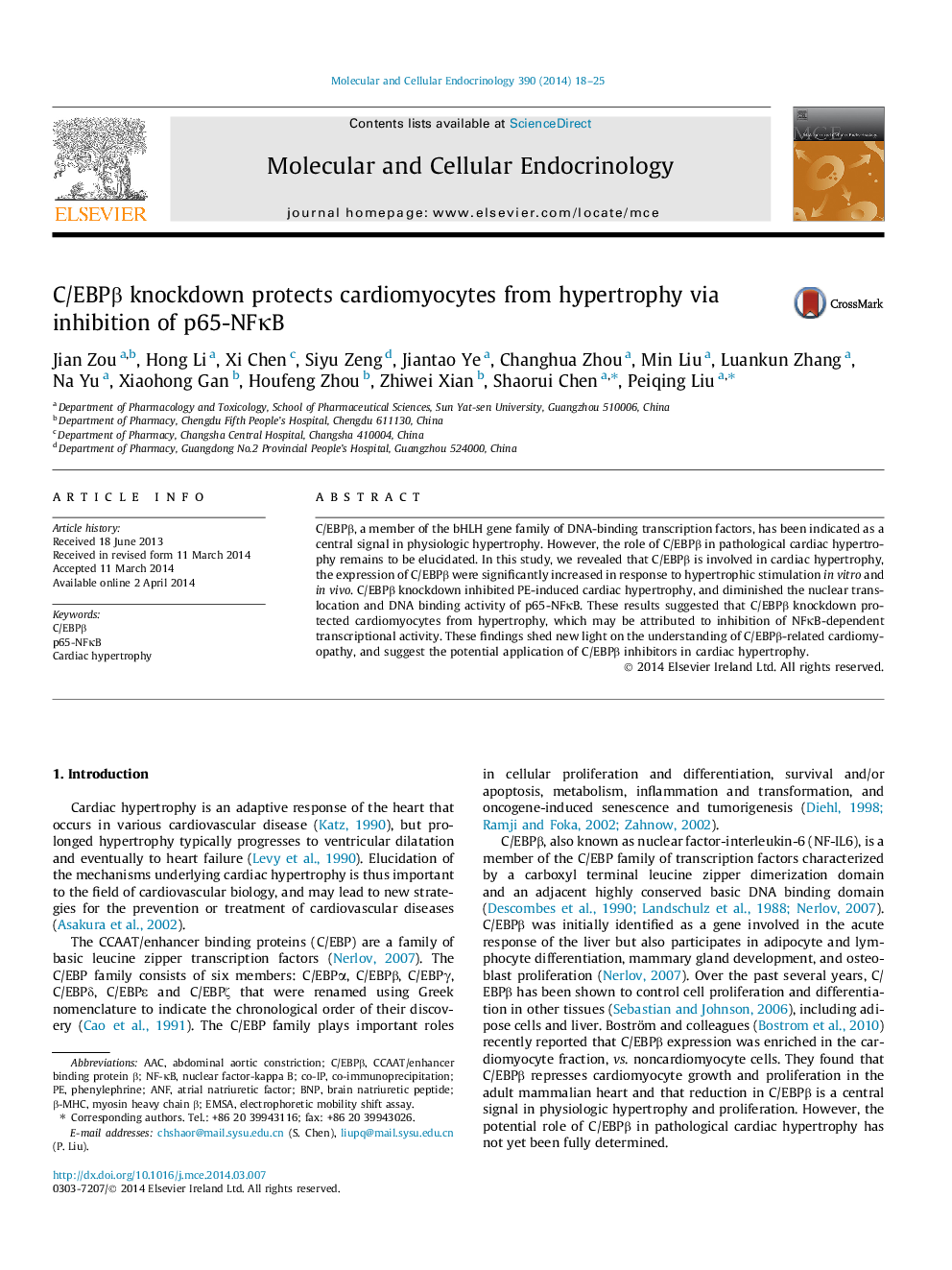| Article ID | Journal | Published Year | Pages | File Type |
|---|---|---|---|---|
| 2196030 | Molecular and Cellular Endocrinology | 2014 | 8 Pages |
•C/EBPβ expression is upregulated in response to hypertrophic stimulation in vitro and in vivo.•C/EBPβ knockdown protects cardiomyocytes from hypertrophy.•C/EBPβ knockdown reduced the nuclear translocation of p65-NFκB, and diminished NFκB-DNA binding activity.
C/EBPβ, a member of the bHLH gene family of DNA-binding transcription factors, has been indicated as a central signal in physiologic hypertrophy. However, the role of C/EBPβ in pathological cardiac hypertrophy remains to be elucidated. In this study, we revealed that C/EBPβ is involved in cardiac hypertrophy, the expression of C/EBPβ were significantly increased in response to hypertrophic stimulation in vitro and in vivo. C/EBPβ knockdown inhibited PE-induced cardiac hypertrophy, and diminished the nuclear translocation and DNA binding activity of p65-NFκB. These results suggested that C/EBPβ knockdown protected cardiomyocytes from hypertrophy, which may be attributed to inhibition of NFκB-dependent transcriptional activity. These findings shed new light on the understanding of C/EBPβ-related cardiomyopathy, and suggest the potential application of C/EBPβ inhibitors in cardiac hypertrophy.
Graphical abstractWe investigated the role of C/EBPβ in mediating pathological cardiac hypertrophy. The results showed that the expression of C/EBPβ were significantly increased in response to hypertrophic stimulation in vitro and in vivo. C/EBPβ knockdown diminished the nuclear translocation and DNA binding activity of p65-NFκB, and thereby inhibited cardiac hypertrophy.Figure optionsDownload full-size imageDownload high-quality image (43 K)Download as PowerPoint slide
